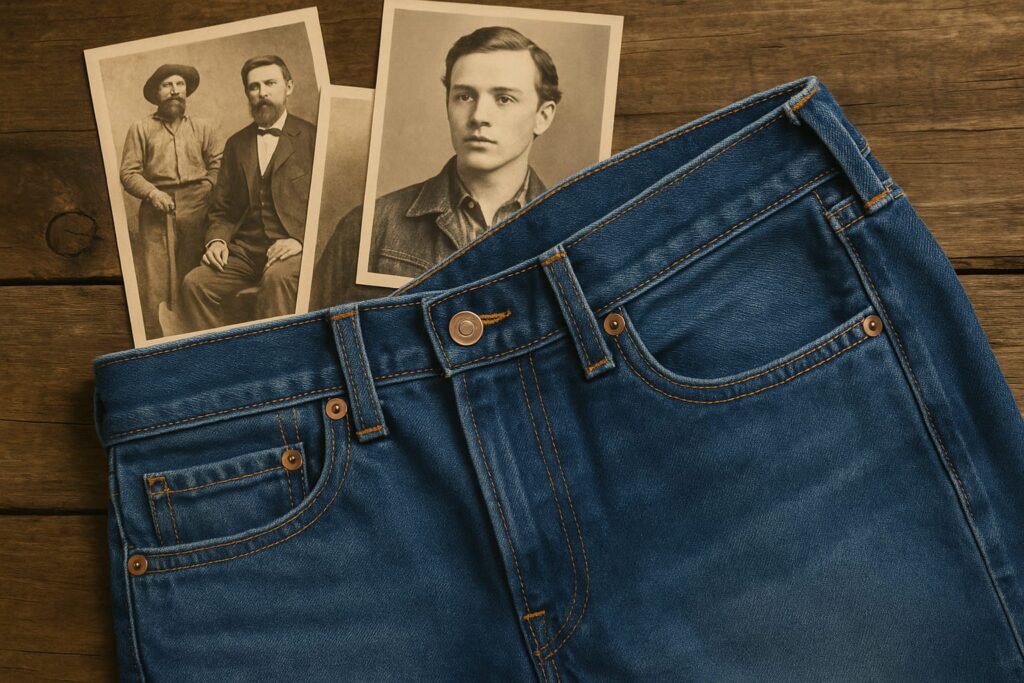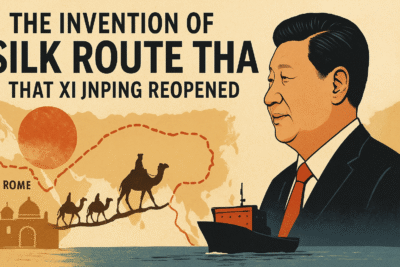
Originally designed as durable workwear for miners and labourers, jeans have evolved into a global fashion staple, symbolising everything from rugged practicality to youthful rebellion. (Photo for representation: AI generated)
Jeans, those ubiquitous trousers made from denim or dungaree cloth, have a rich history that dates back five centuries and spans continents. Originally designed as durable workwear for miners and labourers, jeans have evolved into a global fashion staple, symbolising everything from rugged practicality to youthful rebellion.
Origins of the fabric
The fabric that would become denim has its roots in two European cities: Genoa, Italy, and Nîmes, France.
The story begins in the 16th century in Genoa, Italy, where a sturdy cotton fabric called fustian was produced. This fabric stood out for its durability and affordability, made with cotton yarns dyed with indigo rather than traditional woad.
Genoa’s port was one of the most important in the world at the time, and fustian was initially used for sails and cargo covers. Dock workers soon adopted the fabric for their workwear due to its toughness and the blue colour’s ability to mask stains.
Meanwhile, in Nîmes, French weavers attempted to replicate this fabric but instead created a unique twill weave known as “serge de Nîmes”—later shortened to “denim”—characterised by blue warp threads dyed with indigo and white weft threads, giving the fabric its distinctive look.
This fabric was coarser and used for overgarments like smocks and overalls, while Genoese jean remained a medium-quality fabric used widely for work clothes.
The term “jeans” likely derives from the French word Gênes, meaning Genoa, reflecting the fabric’s place of origin. By the late 16th century, English records mention “jean fustians” imported from Genoa, highlighting the fabric’s spread across Europe as a popular working-class textile
The birth of riveted jeans: An American improvisation
The modern blue jean as we know it began in the United States during the mid-19th century. Levi Strauss, a German immigrant who moved to San Francisco during the 1853 Gold Rush, sold durable cotton fabric including denim. Tailor Jacob W. Davis, a customer of Strauss, innovated by reinforcing trousers with copper rivets at stress points to strengthen workwear for miners. In 1873, Strauss and Davis patented this riveted design, marking the birth of the blue jeans.
Initially, these “waist overalls” were practical garments for miners, farmers, and factory workers. The design featured two front pockets, a back patch pocket, and a small watch pocket added later. The denim used was American-made, dispelling myths that it was imported from France.
From workwear to global fashion: Jeans as a cultural icon
Jeans remained workwear until the mid-20th century, when Hollywood stars like Marlon Brando and James Dean popularised them as symbols of youthful defiance in films such as The Wild One and Rebel Without a Cause. This association with rebellion made jeans a staple of the greaser subculture and later various youth movements through the 1960s and beyond.
By the 1970s, jeans had transcended their working-class origins to become everyday casual wear worldwide. Styles diversified, including flared legs and decorated denim, reflecting individual expression. The 1980s saw designer brands like Calvin Klein and Armani elevate jeans to high fashion, introducing premium fits and finishes such as acid wash and skinny jeans.
Denim’s enduring legacy
Today, jeans remain one of the most popular and versatile garments globally, embraced across genders, ages, and social classes. The fabric and design continue to evolve, with sustainable denim production emerging in response to environmental concerns. Yet, the core story of jeans — a blend of practicality, innovation, and cultural symbolism — remains woven into every pair.
In essence, jeans are more than just trousers; they are a fabric of history, identity, and style that has endured for over 500 years, when the India was yet to see the first Mughal invader and Vijayanagar Empire was thriving, Europe was undergoing Reformation grappling with the ideas of Martin Luther, African kingdoms were on their own, the American invasion by European powers was still unfolding, the Ottoman Empire was expanding and Nicolaus Copernicus was still trying to tell Europe and the Christian world that the Sun was the centre of our solar system.



